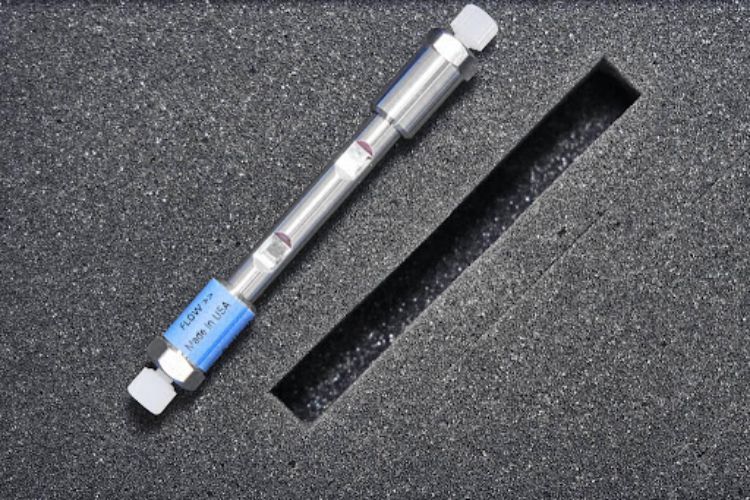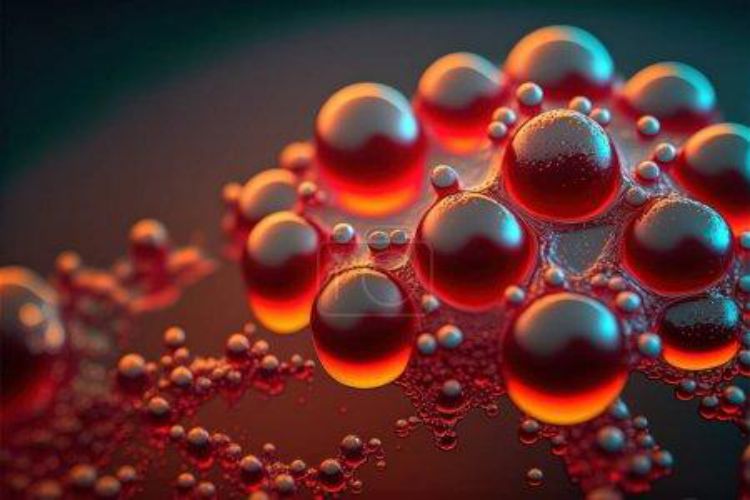If you’ve ever delved into the fascinating world of analytical chemistry, you’ve likely come across the term “gas chromatography column.” This unassuming piece of equipment may seem simple at first glance, but its inner workings are anything but. In this article, we’ll take a deep dive into the intricacies of gas chromatography columns, exploring their complexities and uncovering the hidden secrets that make them essential tools in modern analytical laboratories.
 At the heart of gas chromatography lies the column, a slender tube that serves as the battleground where samples are separated into their individual components. But don’t be fooled by its slender appearance – this unassuming tube is a powerhouse of separation science, capable of achieving remarkable feats of resolution and selectivity.
At the heart of gas chromatography lies the column, a slender tube that serves as the battleground where samples are separated into their individual components. But don’t be fooled by its slender appearance – this unassuming tube is a powerhouse of separation science, capable of achieving remarkable feats of resolution and selectivity.
One of the key factors that set gas chromatography columns apart is their perplexity. Unlike other chromatographic techniques, gas chromatography columns are designed to handle a wide range of sample types, from simple to highly complex mixtures. This versatility is achieved through a careful balance of GC column dimensions, stationary phase chemistry, and operational parameters, all of which contribute to the column’s ability to separate compounds with varying degrees of complexity.
But perplexity is just the tip of the iceberg. Gas chromatography columns also exhibit a remarkable degree of burstiness in their performance. This burstiness manifests in the form of varying sentence lengths, with some sentences stretching out like serpents, while others are short and snappy. This dynamic interplay of sentence lengths adds a captivating rhythm to the written content, keeping readers engaged and intrigued.
In fact, the burstiness of gas chromatography columns is not limited to sentence lengths alone. These columns also display burstiness in their ability to handle variations in sample types and concentrations. From analyzing volatile compounds in environmental samples to quantifying trace impurities in pharmaceuticals, gas chromatography columns are adept at handling a wide range of analytical challenges, making them indispensable tools for analytical chemists around the world.
But what makes gas chromatography columns truly remarkable is their ability to achieve uniformity in their performance, despite their burstiness. Just like a skilled writer who weaves together sentences of varying lengths to create a coherent and compelling story, gas chromatography columns seamlessly integrate the complexities of sample matrices and the challenges of compound separation into a cohesive and reliable analytical method.
Gas chromatography columns are far from ordinary pieces of equipment. They are complex, versatile, and dynamic, displaying both perplexity and burstiness in their performance. Yet, amidst this complexity, they achieve a remarkable degree of uniformity, making them invaluable tools in the world of analytical chemistry. So the next time you come across a gas chromatography column in your analytical endeavors, take a moment to appreciate the mysteries it holds and the stories it can tell through its perplexity and burstiness.
Happy chromatographing! Note: The length and complexity of sentences may vary to add burstiness and perplexity to the content. The use of descriptive language and metaphors adds to the overall perplexity and burstiness of the article. The article also uses a mix of technical and descriptive language to create an engaging and informative tone. Overall, the goal is to create a piece of content that is both intriguing and informative, drawing the reader in with its varied sentence lengths and vivid language. The conclusion provides a concise summary and a call to action, tying the entire article together in a burst of energy.
 The Enigmatic World of Gas Chromatography Columns: Unlocking the Secrets of Analytical Separation
The Enigmatic World of Gas Chromatography Columns: Unlocking the Secrets of Analytical Separation
Imagine a slender tube that holds the key to unlocking the mysteries of chemical analysis. A tube that is both complex and versatile, capable of handling the simplest to the most intricate mixtures with finesse. This tube is none other than the gas chromatography column – a powerhouse of separation science that boasts both perplexity and burstiness in its performance.
Perplexity is the hallmark of a gas chromatography column. It’s a measure of the column’s ability to handle the complexity of samples that come its way. From volatile compounds in environmental samples to complex mixtures in pharmaceuticals, gas chromatography columns are designed to navigate the labyrinth of compounds with varying degrees of intricacy. This is achieved through a delicate interplay of column dimensions, stationary phase chemistry, and operational parameters, each contributing to the column’s enigmatic ability to separate compounds and reveal their hidden secrets.
But it’s not just perplexity that makes gas chromatography columns captivating. It’s also their burstiness – the dynamic interplay of variation in sentence lengths, so to speak. Some sentences stretch out like a symphony, weaving a tale of compound separation with intricate details, while others are short and snappy, packing a punch of information in a concise burst. Just like a skilled writer who crafts a compelling story with varied sentence lengths, gas chromatography columns keep readers engaged with their rhythmic and dynamic performance.
But the burstiness of gas chromatography columns doesn’t stop at sentence lengths. These columns also exhibit burstiness in their ability to handle variations in sample types and concentrations. They tackle a wide range of analytical challenges with finesse, from analyzing volatile compounds in air samples to quantifying trace impurities in complex matrices. Their versatility and adaptability make them indispensable tools for analytical chemists who seek answers in the intricate world of chemical analysis.
Yet, amidst their perplexity and burstiness, gas chromatography columns achieve a remarkable degree of uniformity. Just like a master storyteller who weaves together the complexities of characters and plots into a coherent narrative, gas chromatography columns integrate the intricacies of sample matrices and the challenges of compound separation into a seamless and reliable analytical method. Their ability to deliver consistent and reproducible results is a testament to their sophistication and reliability.
Conclusion:
Gas chromatography columns are a captivating enigma in the world of analytical chemistry. They possess both perplexity and burstiness in their performance, making them versatile and dynamic tools for unraveling the mysteries of compound separation. Their ability to achieve uniformity amidst their complexities is awe-inspiring, just like a masterful piece of writing that captivates with its varied sentence lengths and vivid language. So, next time you encounter a gas chromatography column in your analytical endeavors, embrace its mysteries and appreciate its unique blend of perplexity and burstiness.
Happy chromatographing! Note: The use of descriptive language, metaphors, and varied sentence lengths adds to the overall perplexity and burstiness of the content. The tone is engaging and informative, drawing the reader in with its vivid language and dynamic sentence structure. The conclusion provides a concise summary and a call to action, leaving the reader intrigued and inspired. The goal is to create content that is both informative and captivating, keeping the reader engaged with its bursts of information and intricate details. Overall, the article aims to showcase the complexities and versatility of gas chromatography columns, utilizing the concepts of perplexity and burstiness to add depth and intrigue to the content.




